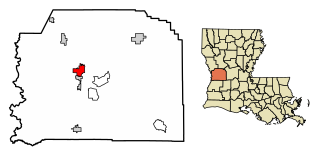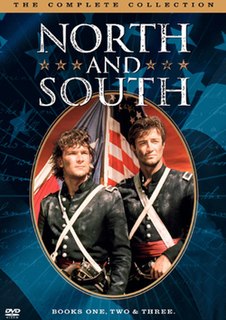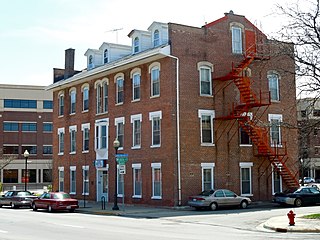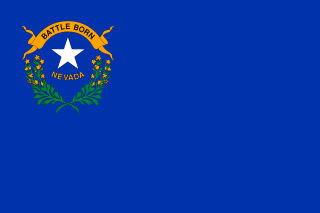
Leesville is a city in, and the parish seat of, Vernon Parish, Louisiana, United States. The population was 6,612 at the 2010 United States Census. It is part of the Fort Polk South Micropolitan Statistical Area and is additionally served by the Leesville Airport. The city is home to the Fort Polk U.S. Army installation. The populations of Fort Polk and Leesville, if combined, would result in a city with a population of more than 20,000.
Philip Huntoon is said to be the ancestor of all persons in America bearing the name "Huntoon." Philip Hunton, as he was first called, signed his name on 20 Feb 1688/89 below a humble Addresse of the Inhabitants and train soldiers of ye Province of New Hampshire to the governor of Massachusetts. We can suppose, therefore, that Philip was born before 1668. He was granted land in Exeter, New Hampshire in 1697. He removed to Kingston a few years later, where he lived for the rest of his life.

National gold bank notes (NGBN), issued by nine national gold banks in California in the 1870s and 1880s, were national bank notes redeemable in gold. Printed on a yellow-tinted paper, six NGBN denominations circulated: $5, $10, $20, $50, $100, and $500. A $1,000 NGBN was designed and printed, but never issued. During the issuing period of national gold banks (1871–83), the U.S. Treasury issued 200,558 notes totaling $3,465,240. Today, national gold bank notes are very rare in the higher denominations with condition generally falling in the good to fine range. Approximately 630 NGBNs are known to exist, and roughly 20 grade above "very fine".
Interstate 470 (I-470) is a 13.72-mile (22.08 km) loop highway that bypasses the downtown area of Topeka, Kansas. I-470 begins at an interchange with Interstate 70 in western Topeka and heads generally southeast, running concurrent with U.S. Route 75 (US-75). The concurrency with US-75 ends 5.74 miles (9.24 km) later at the Burlingame Road interchange. I-470 becomes part of the Kansas Turnpike at its junction with Interstate 335. From there, the highway heads generally northeast through the southeastern sections of Topeka. After traveling 7.03 miles (11.31 km) as the Kansas Turnpike, I-470 reaches its eastern terminus with Interstate 70. The highway has annual average daily traffic values as high as 43,000 west of Gage Boulevard to as low as 10,370 near the eastern terminus with Interstate 70. As an interstate highway, Interstate 470 is a part of the United States National Highway System. The non-turnpike portions of the highway are maintained by the Kansas Department of Transportation, while the turnpike portion is maintained by the Kansas Turnpike Authority.

North and South is the title of three American television miniseries broadcast on the ABC network in 1985, 1986, and 1994. Set before, during, and immediately after the American Civil War, they are based on the 1980s trilogy of novels North and South by John Jakes. The 1985 first installment, North and South, remains the seventh-highest rated miniseries in TV history. North and South: Book II (1986) was met with similar success, while 1994's Heaven and Hell: North and South Book III was poorly received by both critics and audiences.
Horatio Gates Knight was an American politician, manufacturer and philanthropist who served as the 30th Lieutenant Governor for the Commonwealth of Massachusetts from 1875 to 1879.
The Rural Municipality of Griffin No. 66, Saskatchewan was originally called Hastings and is now named Griffin as of January 30, 1910. The original founding date of Hastings was December 13, 1909

USS LST-472 was a United States Navy LST-1-class tank landing ship used in the Asiatic-Pacific Theater during World War II. As with many of her class, the ship was never named. Instead, she was referred to by her hull designation.

Each segmental medullary artery is a branch of the cervical part of the vertebral artery. These small branches penetrate into the vertebral bone through small openings such as the intervertebral foramina. These segmental arteries provide blood flow to the surface and inside the spinal canal at each segmental level.
Bergey’s Manual of Systematic Bacteriology is the main resource for determining the identity of prokaryotic organisms, emphasizing bacterial species, using every characterizing aspect.

The Galena Hotel, originally known as the Fox River House, is a historic hotel in Aurora, Illinois. It is the oldest hotel still standing in the city.
Michael Harris Greene is an American retired actor who was active from the 1960s through the 1990s.

Lieutenant General David Holmes Huntoon, Jr., served a 40-year military career in the U.S. Army. In his last assignment he was the Superintendent of the United States Military Academy at West Point, New York from July 15, 2010 until July 15, 2013. During his service, Huntoon served in infantry, planning, operations, training, strategy, and leader development positions, and commanded organizations from platoon level to Army Major Command. He is the only Army general officer to have led the U.S. Army Command and General Staff College, the U.S. Army War College, and the U.S. Military Academy. Huntoon significantly influenced leader development programs in the U.S. Army as a general officer. As a Major, he wrote principal elements of the U.S. operational plan for the United States invasion of Panama in 1989, and was a lead planner in the XVIII Airborne Corps' plan for Operation Desert Storm (1990-1991).
Mary Knight Wood Mason was an American pianist, music educator and composer. She was born in Easthampton, Massachusetts, the daughter of Lieutenant-governor, manufacturer and philanthropist Horatio G. Knight and Mary Ann Huntoon Knight. She was educated at Charlier Institute in New York City and Miss Porter's School in Farmington, Connecticut, studying music with Karl Klauser, Benjamin Johnson Lang and Henry Holden Huss.

The 1901 Washington football team was an American football team that represented the University of Washington during the 1901 college football season. In its first season under coach Jack Wright, the team compiled a 4–3 record and outscored its opponents by a combined total of 59 to 48. Dick Huntoon was the team captain.

Carolyn Leach Huntoon is the first American woman to have served as the director of the Johnson Space Center in Houston, Texas, a position which she held from 1994 to 1996. She began her career with the National Aeronautics and Space Administration in 1970.
Huntoon is a surname. Notable people with the surname include:
Huntoon Lake is a 42.5-acre private, all-sports lake in Waterford Township in Oakland County, Michigan.
The Boys of Twilight is an American western drama series that aired on CBS from February 29 until March 21, 1992.
Mary Huntoon was an American artist and art therapist. The Mary Huntoon Papers are located at the University of Kansas. It consists primarily of her personal correspondences, correspondences as director of the Federal Art Project in Kansas, original poetry manuscripts, speech and lecture notes, photographs or reproductions of her artwork, original artwork, inventories, exhibit catalogs and programs, information on employment and research as an Art Therapist at Winter V.A. Hospital, and family photographs.











